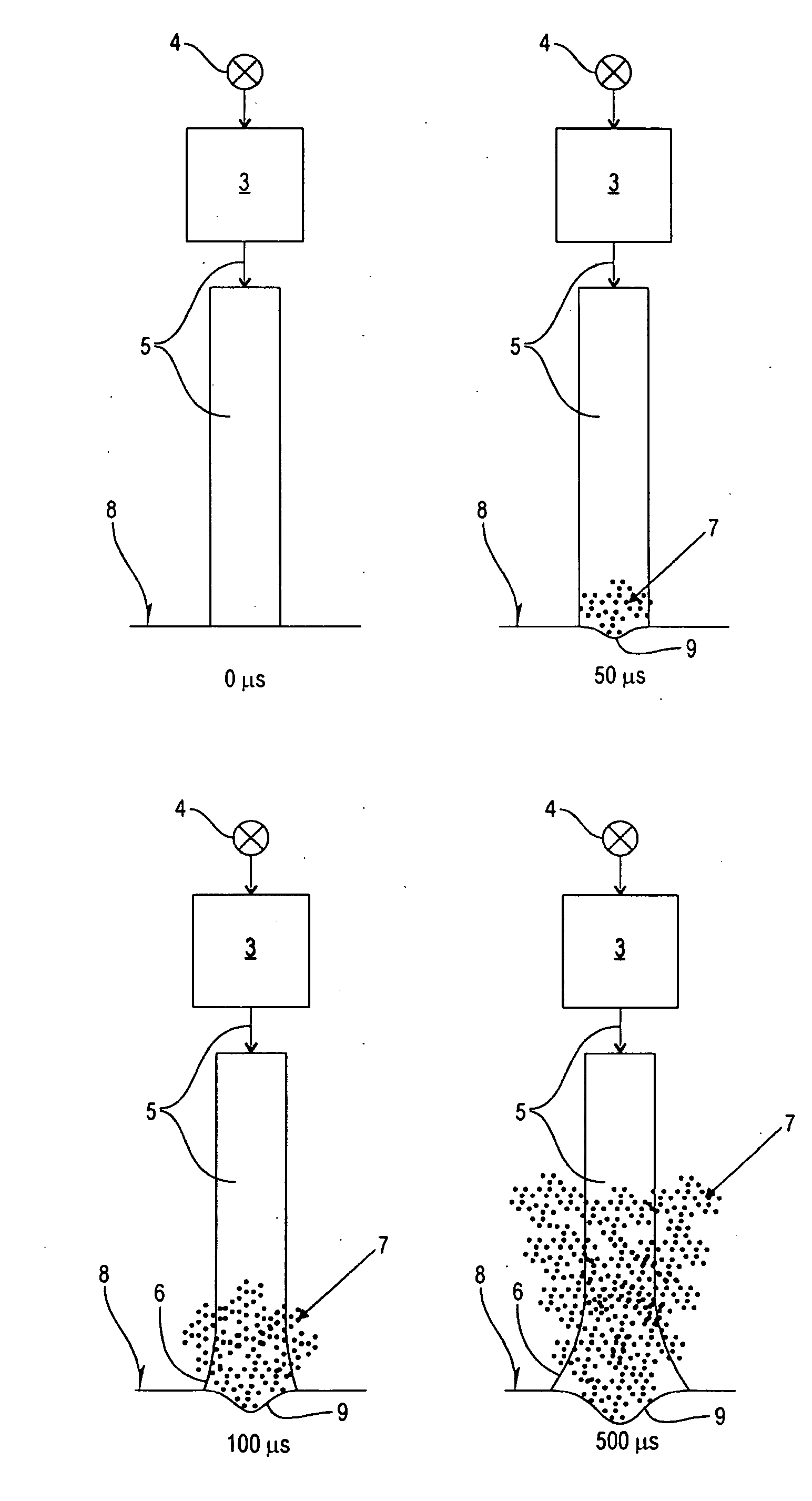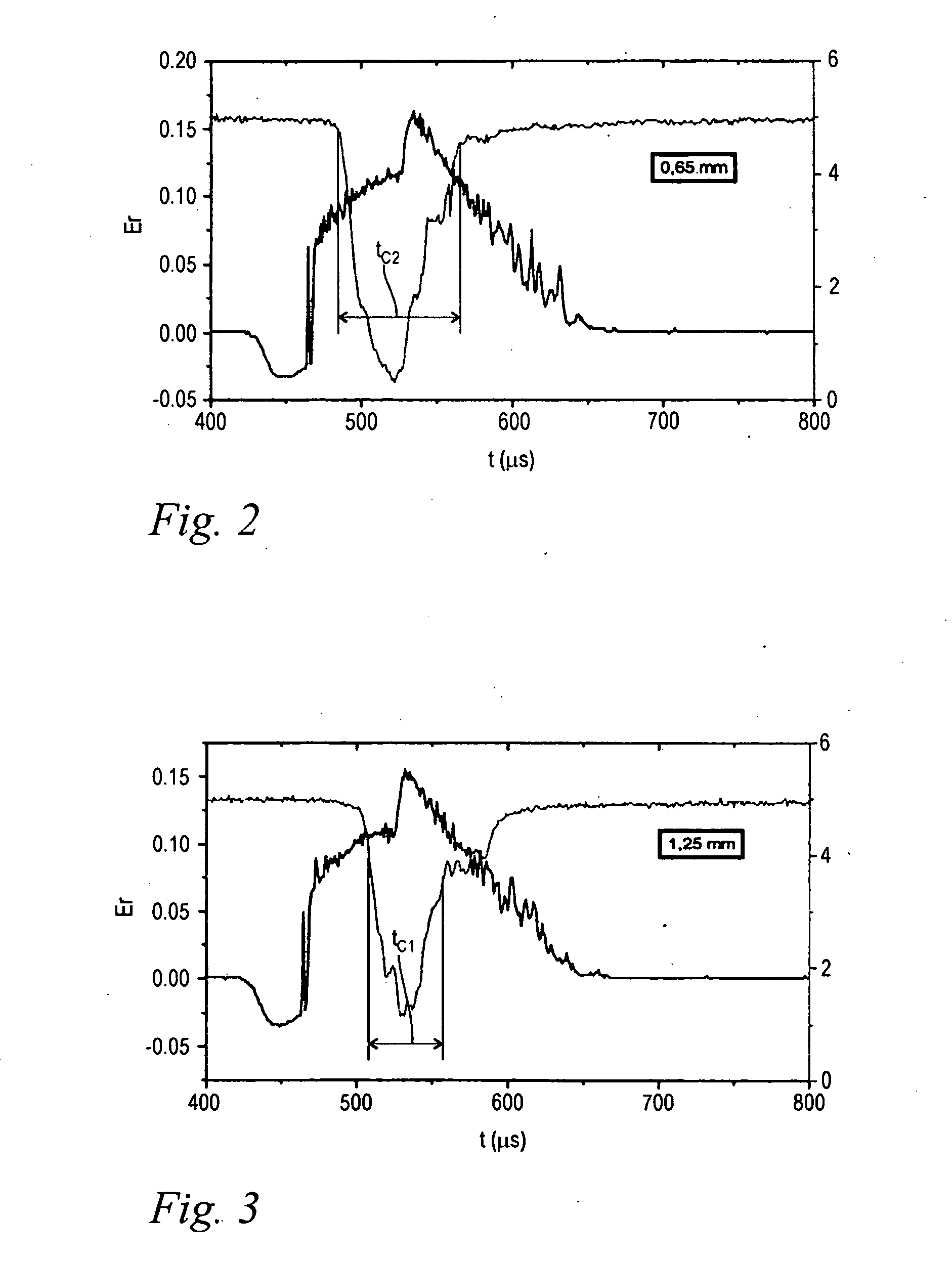Laser System for Hard Body Tissue Ablation
a laser system and hard body technology, applied in the field of laser systems, can solve the problems of material removal, undesirable heating of surrounding tissue, and reduce the effectiveness of lasers, and achieve the effect of improving efficiency
- Summary
- Abstract
- Description
- Claims
- Application Information
AI Technical Summary
Benefits of technology
Problems solved by technology
Method used
Image
Examples
Embodiment Construction
[0031]FIG. 1 shows a schematic illustration of a debris cloud 7 generated during the course of a single laser pulse at four different points of time, namely at the beginning of the single laser pulse at 0 μs, followed by subsequent time steps of 50 μs, 100 μs and 500 μs. A laser system comprises a laser 3 that is a solid state laser and is pumped by a flash lamp 4. The laser is a solid-state laser with an inversion population remaining time tR of ≦200 μs, as illustrated in FIGS. 6, 7. The inversion population remaining time tR is the time within which in the absence of pumping the remaining inversion population of the laser energy status is reduced by 90%. The laser is preferably an Er:YAG with an inversion population remaining time tR of ≦300 μs, or an Er:YSGG (or Er Cr:YSGG) laser with an inversion population remaining time tR of ≦3200 μs (FIG. 7). However, other solid state lasers or any other type of lasers such as liquid, diode, gas or fiber lasers can be used.
[0032]During pump...
PUM
 Login to View More
Login to View More Abstract
Description
Claims
Application Information
 Login to View More
Login to View More - R&D
- Intellectual Property
- Life Sciences
- Materials
- Tech Scout
- Unparalleled Data Quality
- Higher Quality Content
- 60% Fewer Hallucinations
Browse by: Latest US Patents, China's latest patents, Technical Efficacy Thesaurus, Application Domain, Technology Topic, Popular Technical Reports.
© 2025 PatSnap. All rights reserved.Legal|Privacy policy|Modern Slavery Act Transparency Statement|Sitemap|About US| Contact US: help@patsnap.com



